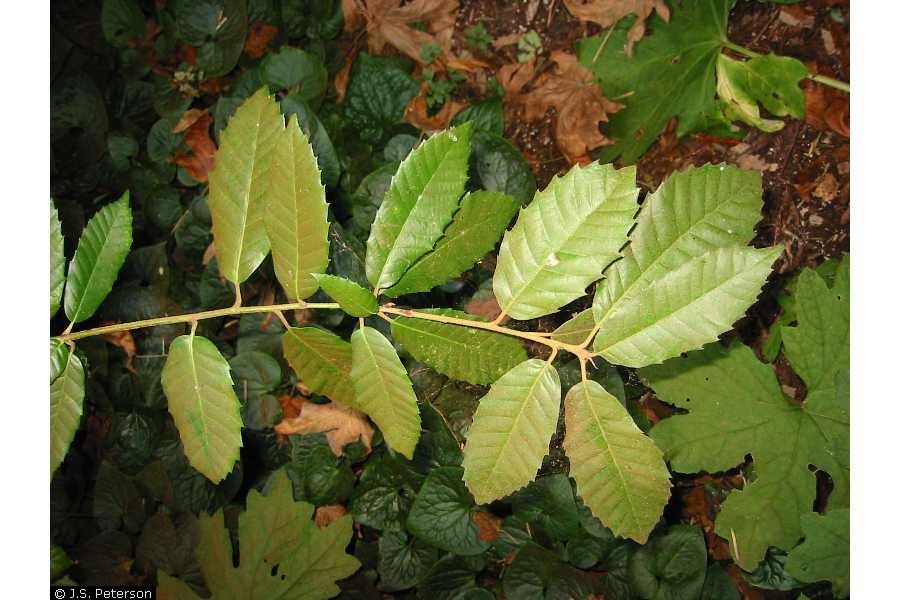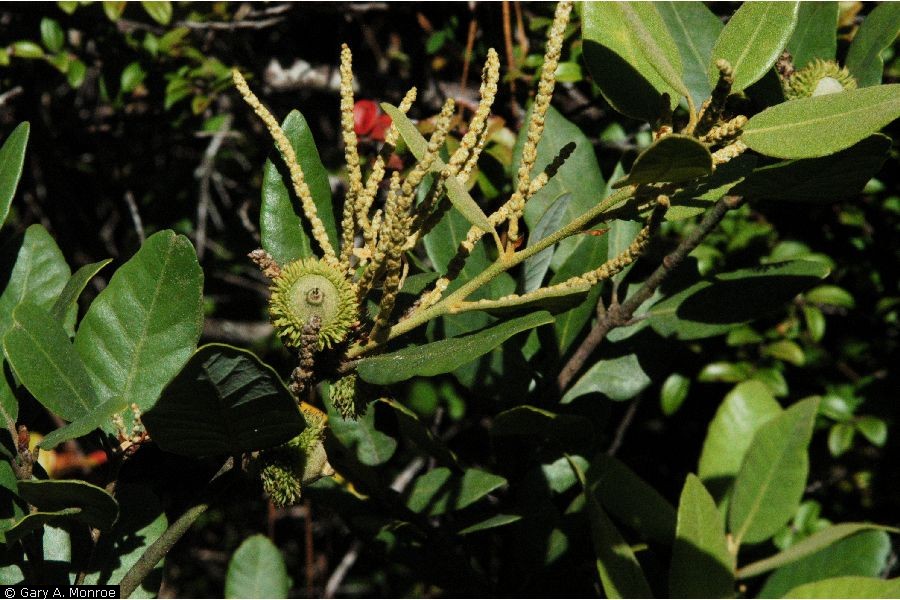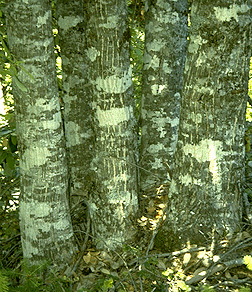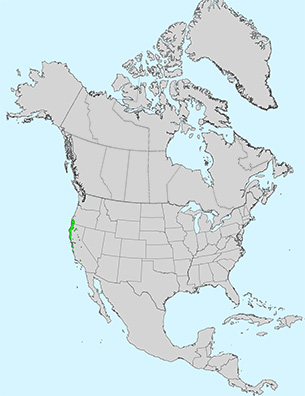Taxonomy: Kingdom - Plantae (plants). Subkingdom - Tracheobionta (vascular plants). Superdivision - Spermatophyta (seed plants). Division - Magnoliophyta. Class - Magnoliopsida. Order - Fagales. Family - Fagaceae (Beach family). Genus -Lithocarpus. Species - Lithocarpus densiflorus (Hook. & Arn.)
Ecology: Tanoak grows as an evergreen tree or shrub. The typical variety is a medium-sized tree, usually attaining 20-24 m heights. Mature tanoaks have deep taproots and an extensive network of lateral and surface roots. Tanoak is shade tolerant when young and can persist in shade as a mature tree. Tanoak also tolerates full sunlight, so it can be either a pioneer after fire or other top-killing disturbance or a subcanopy component in old-growth forests. Sprouts tolerate full sunlight better than seedlings. Once seedlings establish, however, shade slows their growth. Most rapid growth occurs with top light when there is a conifer canopy, so tanoak is well adapted to a subcanopy position.



